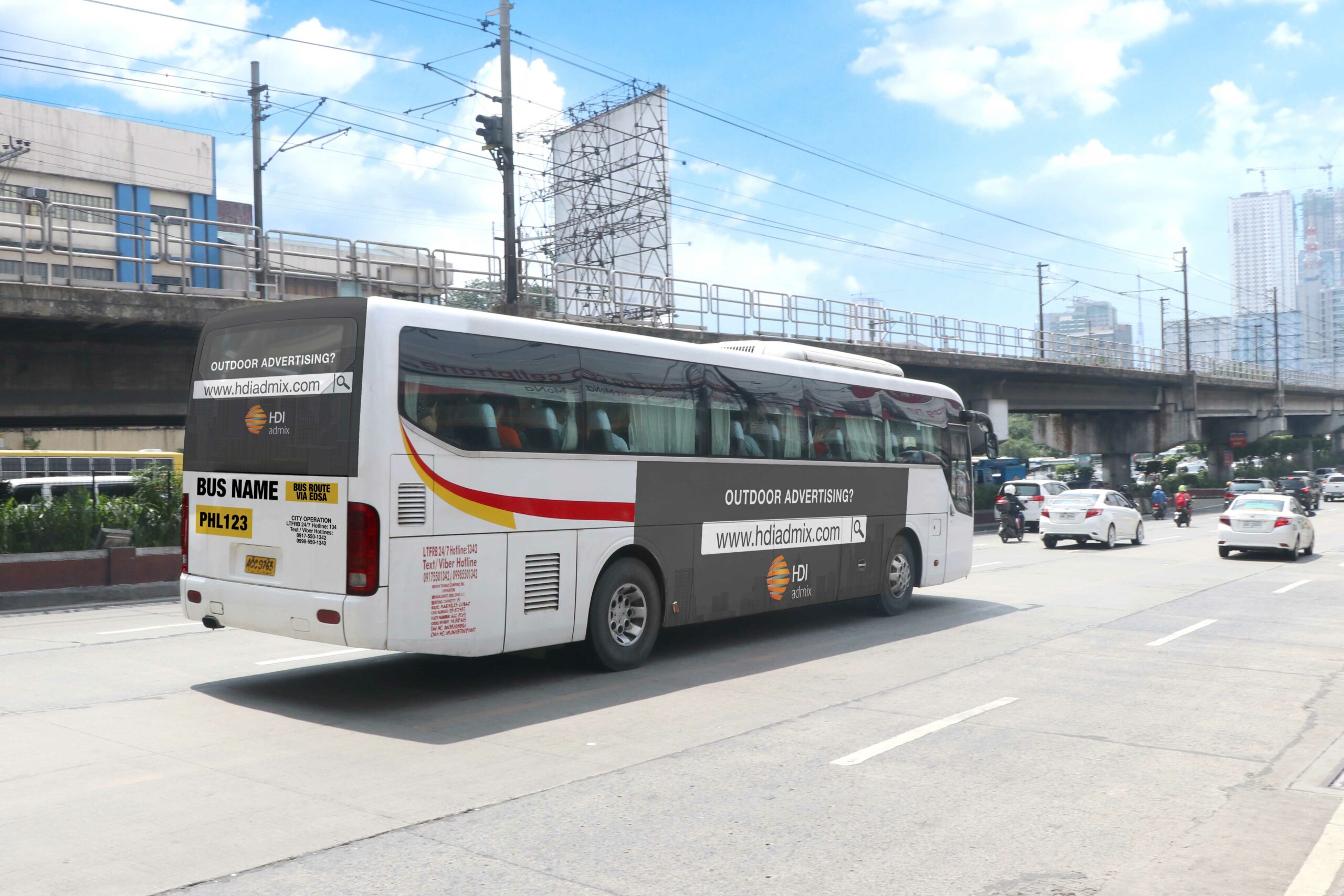Why Select Transit Advertising Philippines for Your Brand
Why Select Transit Advertising Philippines for Your Brand
Blog Article
Discovering the Influence and Effectiveness of Transit Advertising And Marketing in Urban Advertising Strategies
Transit advertising has actually ended up being a substantial element of metropolitan advertising strategies, utilizing on the one-of-a-kind dynamics of public transportation atmospheres. With the quick advancement of technology and moving customer behaviors, the landscape of transportation advertising and marketing is undertaking notable adjustments that merit closer evaluation.
The Surge of Transit Marketing
As city populations continue to swell, the need for ingenious marketing services has actually led to the surge of transit advertising as a pivotal element of city advertising and marketing techniques. This kind of marketing leverages mass transit systems-- such as buses, subways, and trains-- to get to a varied target market in densely inhabited locations. The effectiveness of transportation advertising depends on its capacity to involve consumers throughout their daily commutes, an usually neglected yet essential time for brand name messaging.
With cities becoming significantly congested, typical marketing areas are coming to be scarce and much less reliable. Transit advertising offers a vibrant option, making it possible for brand names to display their messages in high-traffic locations where possible clients are continually exposed to the advertisements. Furthermore, as city homeowners significantly depend on public transport, the importance and exposure of transportation marketing have actually expanded dramatically.
Furthermore, technological innovations have actually boosted the sophistication of transportation advertising and marketing, allowing for digital display screens and interactive projects that can capture consumer focus more successfully than fixed ads. Consequently, transportation advertising is not only an economical alternative yet also a necessary strategy for brands seeking to get in touch with urban customers in an impactful and remarkable fashion.
Trick Advantages of Transit Advertising And Marketing
The performance of transportation advertising and marketing is emphasized by its diverse benefits, making it an important tool for city marketers. One of the key benefits is its considerable reach; transit systems offer countless guests daily, allowing brand names to attach with a varied audience in high-traffic atmospheres. This exposure improves brand awareness, making certain that promotions are seen consistently by commuters.

In addition, transportation advertising and marketing is cost-effective compared to various other media, offering a reduced expense per perception while maintaining high visibility. The versatility of ad styles, from bus wraps to electronic displays, enables imaginative and impactful projects that can adjust to changing market demands.
Customer Habits Insights
A substantial section of customer behavior is influenced by the prevalent nature of transportation marketing in urban settings. This type of marketing records the attention of diverse demographics, engaging consumers during their day-to-day commutes.
Research shows that transit advertising and marketing can stimulate emotional responses, bring about increased brand affinity. Consumers typically link the experience of commuting with details brand names, developing a long lasting impression that influences getting decisions. Additionally, the regularity of exposure to transportation advertisements cultivates knowledge, which is an important element in customer trust and loyalty.

Additionally, the public facet of public transport adds to this phenomenon; as people share areas, they are extra likely to discuss and suggest brand names they come across. Thus, transportation advertising not only gets to consumers but additionally stimulates social interactions that reinforce brand messaging. Recognizing these behavioral understandings permits marketing experts to tailor their methods effectively, making certain that their campaigns reverberate with target audiences in the urban landscape.
Instance Studies and Success Stories
Successful implementation of transportation marketing methods is exhibited with additional hints different study that highlight its performance in city advertising. One notable instance is the cooperation between a popular beverage firm and a significant city's public transit system. The campaign made use of bus covers and indoor posters, leading to a 30% increase in brand recognition and a 15% increase in sales within the target market over 3 months.
One more successful instance involved a local dining establishment chain that utilized train station advertising to bring in travelers. By developing visually striking ads that provided timed promotions, the dining establishment experienced an uptick in foot traffic, with a remarkable 25% boost in lunch hour customers.
Furthermore, a city's tourism board introduced a transit project showcasing neighborhood tourist attractions through bus quit display screens and metro advertisements. The initiative brought about a significant increase in tourist sees, as reported by a 40% boost in queries at site visitor centers.
These situation researches highlight the adaptability and possibility of transit marketing to involve metropolitan audiences effectively, demonstrating that critical positionings can produce significant rois and enhance brand presence in dynamic metropolitan atmospheres. - Transit Advertising Philippines
Future Patterns en route Advertising And Marketing
As metropolitan landscapes proceed to develop, so also does the realm of transit advertising, which is poised to welcome cutting-edge modern page technologies and methods. One significant pattern is the combination of digital advertising and marketing displays into public transit systems. These vibrant screens enable real-time updates and targeted content, enhancing audience interaction. In addition, the adoption of programmatic advertising and marketing is expected to acquire energy, allowing advertisers to leverage information analytics for even more specific audience targeting based on time, place, and market insights.
Another emerging pattern is the use of enhanced reality (AR) and digital fact (VR) experiences within transit marketing. These immersive innovations can astound travelers, transforming ordinary journeys into interactive brand experiences. Additionally, sustainability is ending up being significantly vital; green marketing materials and techniques are likely to acquire traction, showing the expanding customer need for corporate social duty.
Last but not least, the rise of mobile connectivity will help with greater assimilation in between transportation advertising and marketing and individual gadgets. Advertisers can create smooth cross-channel experiences, allowing for prompt communication and involvement with possible clients. Jointly, these trends indicate a transformative future for transit advertising and marketing, supplying brand-new opportunities for brands to link with city target markets.
Conclusion
Transportation advertising and marketing has actually established itself as a considerable component of city advertising approaches, demonstrating considerable performance via enhanced brand name exposure and consumer interaction. The ability to adapt messages to certain demographics, combined with the ingenious usage of innovation, placements transit advertising and marketing as a driving pressure in modern advertising (Transit Advertising Philippines). As urban settings continue to progress, the future of transit advertising assures additional innovations, ensuring its significance and impact fit customer understandings and habits in metropolitan landscapes
As metropolitan populations proceed to swell, the demand for innovative advertising and marketing solutions has led to the increase of transit advertising and marketing as a critical element of metropolitan advertising and marketing methods.A substantial section of customer behavior is affected by the pervasive nature of transportation marketing in city atmospheres. Collectively, these fads show a transformative future for transportation advertising, supplying new methods for brands to connect with urban audiences.
Transit advertising has developed itself as a significant element of urban marketing strategies, showing considerable performance via improved brand name exposure and customer involvement. As city atmospheres continue to advance, the future of transit marketing assures further developments, guaranteeing its go relevance and effect in forming consumer understandings and behaviors in metropolitan landscapes.
Report this page